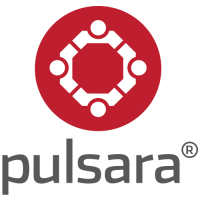Technology is rapidly expanding its role and opportunity within the EMS industry – both directly on scene and in the background of our operations.
Cardiac monitors have evolved, ePCR software has emerged, and tablets have become multi-faceted tools both in the back of the ambulance and inside the living room of a residence. Despite these advances, however, we still face a common hurdle that we seem to continue to have difficulty overcoming – from an operational standpoint, that is – automation.
How can we get data to transfer seamlessly from one source to another? How can we inform all necessary parties, not just two in the equation? We see this dilemma both in the pre-hospital and in-hospital settings, but how can we fix it? How can we use it to our advantage, to promote our strengths?
Where is technology – particularly, automation – both a benefit and an opportunity for us to close the loop, reduce errors and provide insight into efficiencies within EMS?
1. Time-on-task
Taking more of a unit-focused approach, computer-automated dispatch systems have already had a great impact on how we allocate resources and track their progress. This, however, is just the start.
Integrating other applications, software and systems into this formula can greatly enhance the end equation and result. Incorporating your cardiac monitor’s tracking (case summary) features can result in auto-population into your ePCR software, and also into hospital notification applications, alerting staff to not only future patient arrival, but also their vital signs, ECGs, stroke assessment findings and even their basic demographics for registration purposes. All of this results in a streamlined environment that equates to better, faster patient care.
2. Health information exchange
Information sharing needs exists on both on the front end and back end of our operations. We arrive on scene, enter data, and share it with receiving hospitals and physician staff. In turn, they can provide immediate feedback and follow-up in order to expedite our billing processes, quality assurance compliance and promote closed-loop communications.
These steps all have the potential to be accomplished – and automated – through a centralized platform on both sides of the equation. On the surface to the average provider, this may not seem like something that is exciting or largely impacting, but it absolutely is!
Think about the telephone game for a moment. You say a phrase to someone, who repeats it to someone else, and five people later, your statement about the patient’s stable physical presentation has transitioned into their need for immediate respiratory care, cardiac consult and trauma team activation (we’ve all been there). Promoting health information exchange on a single platform – one that can handle an event from start (EMS arrival) to finish (discharge/disposition) – can nearly eliminate the disruption of information sharing that needs to occur within our industry.
3. EMS system status
More than just system status management regarding roaming or staging ambulances throughout a geographic location, system status can refer to your current now. This includes not only crew or unit availability, but also time-on-task tracking, equipment stocking, employee scheduling, fatigue mitigation and credential tracking needs. What was once done on paper (or spreadsheet) can now be accomplished via dashboards and real-time updates.
EMS – whether it’s an individual agency, a local region, or a statewide industry – comprises a system of multiple moving parts. Connecting those moving parts to one another and automating this process certainly changes the past dynamic of how we’ve operated, and significantly enhances the opportunity for how we’ll function moving forward.













